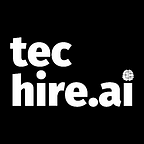The People Behind The Bots — Julia Anderson
Julia Anderson is a Conversational UX Designer who is fascinated by Conversational AI’s impact on our everyday interactions with machines and each other.
Q1 — What drew you to the Conversational AI industry?
Julia: I’ve always been drawn to the art of communication and have enjoyed exploring how technology interacts with people from a user experience perspective. It is fascinating to live in a time where the fundamentals of conversation, our oldest interface, are being applied to new technology and disrupting countless industries. My first “a-ha” moment happened while listening to VUX World’s podcasts, which is where I learned about conversational AI and the people pioneering its growth. If ever there was a time to join the industry, it is now.
Q2 — What skills or transferable skills helped you when entering this space?
Julia: I’m quite new to the space, but coming from a UX design background and as someone who is interested in the power of language, the conversational AI space seemed like a perfect fit.
Communication skills are crucial. Many of my UX projects involve finding ways to streamline communication, such as creating a design system for a non-profit to have a standardized design “language.” I also had practice negotiating and presenting to clients as a consultant, which has given me a new perspective on how cross-functional teams communicate. Throw in my past experiences of learning Spanish and hosting a radio show, and I see my transition to this space as a natural progression of my interest in having good conversations with various people.
Q3 — Were there any specific resources, tools, industry experts, that helped you along the way?
Julia: One of the best pieces of advice I received was to never stop learning. This is a requirement for the ever-changing nature of voice technology. The Conversation Design Institute is a fantastic resource for setting the foundations. Other great resources include Voicebot, Carol Cheng’s Conversation Design Library and the presentations from Lingofest. I’ve been applying what I’ve learned by prototyping in Voiceflow and writing regularly on Medium.
Beyond this, the voice community is active on LinkedIn, Twitter and Clubhouse. I’ve met a lot of people through Women in Voice and The Voice Den. The conversation design community is tight-knit and I’ve had the pleasure of speaking with members who come from diverse backgrounds and offer wise words to newcomers like myself.
Q4 — In a sentence or two tell us what your role entails
Julia: I am currently contracting as a Conversational UX Designer at an early-stage voice startup and freelancing for visual and voice design projects on the side. I love collaborating with people who have an entrepreneurial spirit and welcome a challenge.
Q5 — What do you enjoy most about your role?
Julia: I believe that writing is designing. While I’ve been trained as a designer, I am a writer at heart. The opportunity to combine these two worlds through conversation design inspires me to create quality products and experiences. Having the chance to work with people who share this passion is also a huge perk of being in this industry.
Q6 — What is the most challenging part of conversation design?
Julia: The constraints. This is something that draws me to design, but it can also repel people. Specifically for conversational AI, there are many limitations when it comes to how fluid the conversations are, how to design better affordances and educating people on the breadth of voice tech functionality. While conversation may be one of the oldest interfaces, voice first tech is still new compared to GUI (graphical user interfaces), so its use cases are narrower.
Q7 — What excites you about the future of this industry?
Julia: Conversational AI is breaking the barriers of human-computer interaction. This is a pivotal time where people who have abided by the rules of computer language to communicate with technology are now creating devices that adapt to the rules of human language. The implications of this are massive and I’m thrilled to be joining the industry during a time of growth and discovery.
Q8 — What is one piece of advice you would give to other people looking to enter this industry?
Julia: Keep track of conversations. Write down what you hear, the nuance of the phrases and how you respond. This applies to all conversations — with your friends, voice assistants and even observing dialogue in movies or TV. Not only is this a great tactic for relationship building and storytelling, but you will become inspired by the little things. These little things add up fast and will make you a better conversation designer and listener.
Techires’ takeaways:
- There are many fantastic resources out there to keep broadening your knowledge and skills in this industry.
- There are still many limitations within Conversational AI — so remember to take into consideration what you’re designing for.
- Writing and designing is a perfect recipe for Conversation Design!
Thank you for reading! A special thanks to our guest, Julia. We really enjoyed hearing Julia’s insights, and hope you did too! Click here to follow Julia on LinkedIn!
If you’re keen to hear more insights and advice from industry experts in the Conversational AI space, don’t forget to click the follow button to be notified of future posts!
You can also head over to our socials for more tips and advice from the team at techire ai and if you’re looking for roles within Conversational AI check out our jobs page and website.
And if you’d be interested in taking part in our blog series get in touch, we’d love to hear from you!
Allys Parsons — Conversational AI Recruiter @ Co-Founder @ techire ai
Leigh Smith — Conversational AI Recruiter @ techire ai
